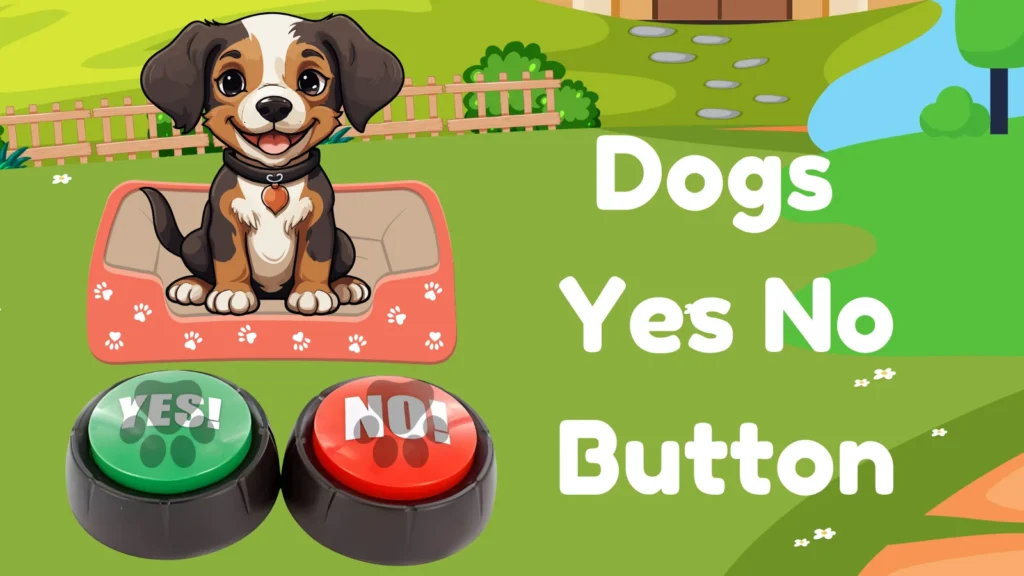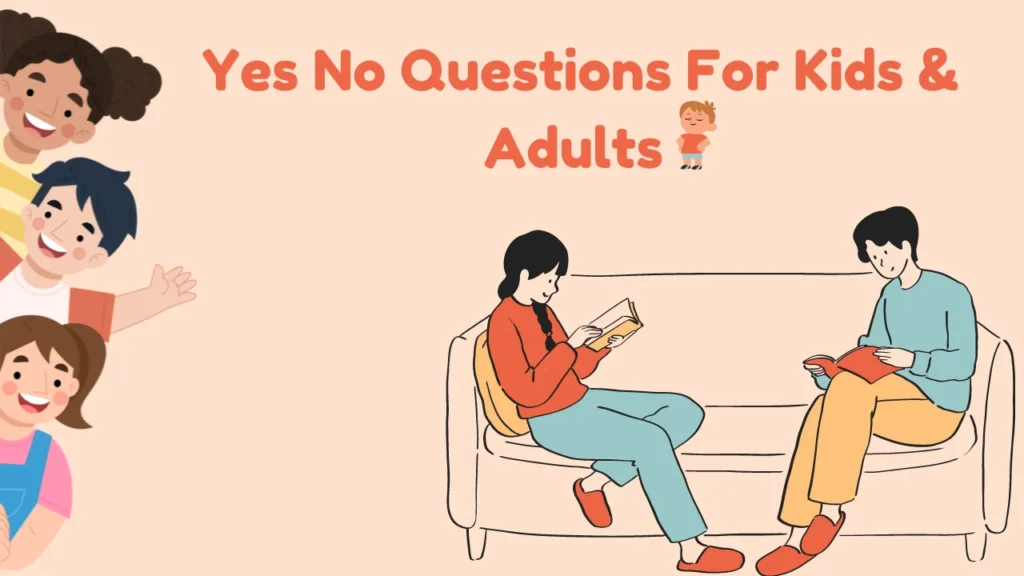Have you ever been stuck making a decision, wishing for a simple yes or no answer? Well, you are not alone! In our complex world, sometimes we all crave that straightforward guidance.
That’s where yes no buttons come in – these nifty little gadgets have become surprisingly popular for all sorts of reasons.
From helping us make choices to adding fun to games, yes-no buttons come in more varieties than you might think. Whether you are a parent looking for a creative way to engage your kids, a dog owner trying to communicate with your furry friend or just someone who loves a good party trick, there’s probably a yes no button out there for you.
In this guide, we’ll explore different types of yes no buttons available Today. We’ll look at how they work, who uses them and even some unexpected ways people have incorporated these simple devices into their lives. So, ready to dive into the world of yes no buttons? Let’s get started!
Yes or No Decider Button
Ever feel paralyzed by indecision? That’s where a Yes or No Decider Button comes in handy. These clever little devices are designed to help you make choices when you feel stuck between two options.
How It Works?
A typical Yes or No Decider Button is simple to use. Just press it, and it’ll randomly light up either “Yes” or “No.” Some versions even have a small screen that displays the answer. It’s like flipping a coin, but with a bit more flair.
When to Use It?
While it might seem silly, these buttons can be surprisingly useful. They’re great for:
– Breaking decision deadlocks
– Adding an element of chance to games
– Teaching kids about probability
– Settling friendly disputes
The Psychology Behind It
Interestingly, using a Yes or No Decider Button can sometimes help you realize what you actually want. If you feel disappointed by the button’s decision, it might mean you subconsciously preferred the other option all along.
DIY Versions
Don’t want to buy one? No problem! There are several online versions of the Yes No Decider Button available. Some creative folks have even made their own using simple electronics kits.
Remember, while these buttons can be fun and occasionally helpful, they’re not meant for serious decisions. Use your judgment & consider the consequences before relying on chance for important choices.
Yes No Maybe Button
Ever feel like “yes” or “no” just don’t cut it? That’s where the Yes No Maybe button comes in handy. This clever little device adds a dash of uncertainty to decision making, perfect for those times when you are just not sure.
How It Works?
The Yes No Maybe button typically has three options: yes, no, and maybe. When you press it, it randomly selects one of these answers. Some versions light up, others make sounds, but they all serve the same purpose – helping you make a decision when you’re on the fence.
Popular Uses
You’d be surprised how versatile these buttons can be! Here are some common ways :
1. Ice breakers at parties
2. Teaching probability to kids
3. Making group decisions at work
4. Adding an element of chance to board games
The Psychology Behind It
Interestingly, sometimes just having that “maybe” option can be comforting. It reflects the uncertainty we often feel in real life. Plus, using a button like this can take some of the pressure off making tough choices.
It’s not making the decision for you, but it might just give you a nudge in one direction.
DIY Yes No Maybe Buttons
Feeling crafty? Some folks have taken to making their own Yes No Maybe buttons. From simple cardboard versions to high-tech Arduino projects, there’s a whole community of DIY button makers out there.
It’s a fun way to personalize your decision making tool & maybe learn a bit about electronics in the process.
Whether you’re a chronic fence-sitter or just someone who enjoys a bit of randomness in life, a Yes No Maybe button might be just what you need. After all, sometimes the best answer is “maybe”!
Yes No Button Online
In the digital age, you don’t need a physical button to get a yes or no answer. Online yes-no buttons have become increasingly popular, offering convenience and accessibility right at your fingertips. Let’s explore some of the ways these virtual decision makers are being used.
Web based Random Decision Generators
Ever struggled to choose between pizza or burgers for dinner? Web-based random decision generators are here to save the day. These online tools use algorithms to provide unbiased yes or no answers.
Simply type in your question, click the button and voila! You’ve got your answer. It’s a fun & easy way to make those everyday decisions that sometimes feel overwhelming.
Yes No Button Apps for Smartphones
For those who want their decision-making tool on the go, yes-no button apps are the perfect solution. Available for both Android and iOS, these apps bring the functionality of a physical yes-no button to your smartphone.
Yes and NO Buzzer Buttons
Ever been to a game show or a quiz night and heard that satisfying “buzz” when someone hits the answer button? That’s the thrill of yes and no buzzer buttons!
These interactive devices aren’t just for TV shows anymore – they’ve found their way into classrooms, offices and even home game nights.
How Yes and No Buzzer Buttons Work?
Yes and no buzzer buttons are simple yet effective tools. They typically come in pairs – one for “yes” and one for “no.” When pressed, they emit a distinct sound, light up, or both.
The “yes” button often has a green light and a higher-pitched sound, while the “no” button might be red with a lower tone. This instant feedback makes them perfect for quick fire decision making or answering questions.
Popular Uses for Buzzer Buttons
You’d be surprised at how versatile these buttons can be:
1. Classroom engagement: Teachers use them to make learning more interactive and fun.
2. Corporate training: They’re great for team-building exercises and quick polls.
3. Family game nights: Spice up your trivia games with a touch of game show flair.
4. Speech therapy: Some therapists use them to help patients practice quick responses.
Choosing the Right Buzzer Buttons
When shopping for buzzer buttons, consider a few key factors:
– Durability: If you’re using them with kids or in a high-traffic area, look for sturdy construction.
– Sound options: Some buzzers let you customize the sounds or adjust the volume.
– Power source: Battery-operated buttons are portable, while plug-in versions are better for permanent setups.
– Size: Larger buttons are easier for young children or people with mobility issues to press.
Whether you are a teacher looking to energize your classroom or a family wanting to add some excitement to game night, yes and no buzzer buttons can be a fun and engaging addition to your toolkit. Just be prepared for the inevitable debates over who buzzed in first!
Yes No Button For Kids
Kids love interactive toys, and yes-no buttons can be a fun and educational addition to their playtime. These simple devices can help children learn decision making skills, improve their reaction times & even assist in language development.
Educational Benefits of Yes-No Buttons
Yes-no buttons for kids aren’t just about fun – they’re packed with learning potential. These interactive tools can help children practice quick thinking, enhance their vocabulary & even learn about cause and effect.
Many parents & teachers use these buttons to make learning more engaging, turning simple questions into exciting games.
Popular Yes-No Button Games for Children
There are countless ways to incorporate yes-no buttons into playtime. “Simon Says” gets a modern twist when kids have to hit “yes” or “no” instead of following instructions.
“True or False” becomes more exciting when children race to press the correct button. These games not only entertain but also sharpen listening skills and quick decision-making abilities.
Choosing the Right Yes-No Button for Your Child
When selecting a yes-no button for kids, consider factors like durability, sound volume, and visual appeal. Some buttons feature bright colors and fun shapes to attract younger children while others might have more advanced features for older kids.
Look for buttons with non toxic materials and sturdy construction to ensure they can withstand enthusiastic play.
Yes No Button For Adults
While yes-no buttons might seem like child’s play, they’ve found a surprising niche in the adult world too. From office environments to social gatherings, these simple devices have proven to be unexpectedly useful & entertaining for grown ups.
Personal Decision-Making Tools
For those who struggle with decision fatigue or want to add an element of chance to their choices, personal yes-no buttons have become a quirky but practical solution.
Whether it’s deciding what to have for dinner or whether to buy that tempting item, some adults find that offloading minor decisions to a yes-no button can be surprisingly liberating.
Stress Relief and Fidget Toys
In our high-stress world, simple fidget toys have gained popularity among adults. Yes-no buttons, with their satisfying click and simple binary choice, can serve as effective stress relief tools.
Some people find that having a physical object to interact with helps them focus or relax during the workday.
From enhancing productivity in the office to adding flair to social events, yes-no buttons for adults prove that sometimes the simplest tools can have the most diverse applications.
Whether you are looking to improve workplace communication, spice up your next party, or just add a bit of whimsy to your daily decisions, an adult-oriented yes-no button might be just what you need.
Yes and No Buttons For Dogs
Ever wondered if your furry friend could talk? Well, with yes and no buttons for dogs, they can come pretty close!
These innovative communication tools are changing the way we interact with our canine companions, allowing them to express their needs & preferences more clearly than ever before.
How Do Dog Communication Buttons Work?
Dog communication buttons are simple devices that play pre-recorded words or phrases when pressed. Owners typically start with basic concepts like “outside,” “play,” or “food,” and gradually introduce more complex ideas.
With patience and consistent training, many dogs learn to use these buttons to communicate their wants and needs.
Training Your Dog to Use Yes-No Buttons
Teaching your dog to use communication buttons takes time and consistency. Start with just two buttons – “yes” and “no” – and use them in situations where the choice is clear.
For example, ask “Do you want to go for a walk?” while showing the leash. Encourage your dog to press “yes” and reward them when they do. Gradually introduce more complex scenarios as your dog becomes comfortable with the concept.
Benefits of Using Yes-No Buttons with Your Dog
Using yes-no buttons can have several advantages:
1. Improved communication: It gives dogs a way to express themselves more clearly.
2. Mental stimulation: Learning to use buttons provides cognitive challenges for dogs.
3. Strengthened bond: The process of learning together can deepen your relationship.
4. Reduced frustration: Dogs may experience less stress when they can communicate their needs.
Limitations and Considerations
While yes-no buttons can be a fun and useful tool, it’s important to remember that they’re not a substitute for understanding your dog’s natural body language and vocalizations.
Some dogs may take to button use more easily than others, and it’s crucial not to force the issue if your pet seems uninterested or stressed by the process.
Whether you’re a tech savvy pet owner or just looking for new ways to connect with your furry friend, yes no buttons for dogs offer an intriguing glimpse into the potential of interspecies communication.
Who knows? Your next conversation with your dog might be just a button press away!
Read More About: Dogs Yes No Button
Bluey Dance Mode Yes No Button
If you’ve got a Bluey fan in your house, you’ve probably heard about the Bluey Dance Mode Yes No Button.
This entertaining gadget brings the excitement of the popular children’s show right into your living room, combining decision-making with dance moves inspired by everyone’s favorite Bluey TV show.
How the Bluey Dance Mode Button Works?
The Bluey Dance Mode Yes No Button is more than just a simple yes or no device. When pressed, it gives you a yes or no answer in a fun Bluey-themed dance sequence.
Kids (and let’s be honest, adults too) can join in, mimicking Bluey’s signature moves while getting their answer.
Why Parents Love the Bluey Dance Mode Button?
It’s not just kids who enjoy this toy. Parents appreciate it because:
1. It’s screen-free entertainment that gets kids moving.
2.It fosters family bonds through shared play.
3. It’s durable & easy to use.
The Bluey Dance Mode Yes No Button cleverly combines decision-making with physical activity and imaginative play. It’s a hit with Bluey fans & a fun way to bring a bit of that Bluey magic into everyday life.
Whether you’re solving disagreements, spicing up game night, or just need a dance break, this button delivers giggles and wiggles in true Bluey style.
Is there a Bluey Dance Mode Yes No Button Available Online?
Yes, the Bluey Dance Mode Yes No Button is also available in an online format. You can access this button by visiting this page: Bluey Yes No Button Online


